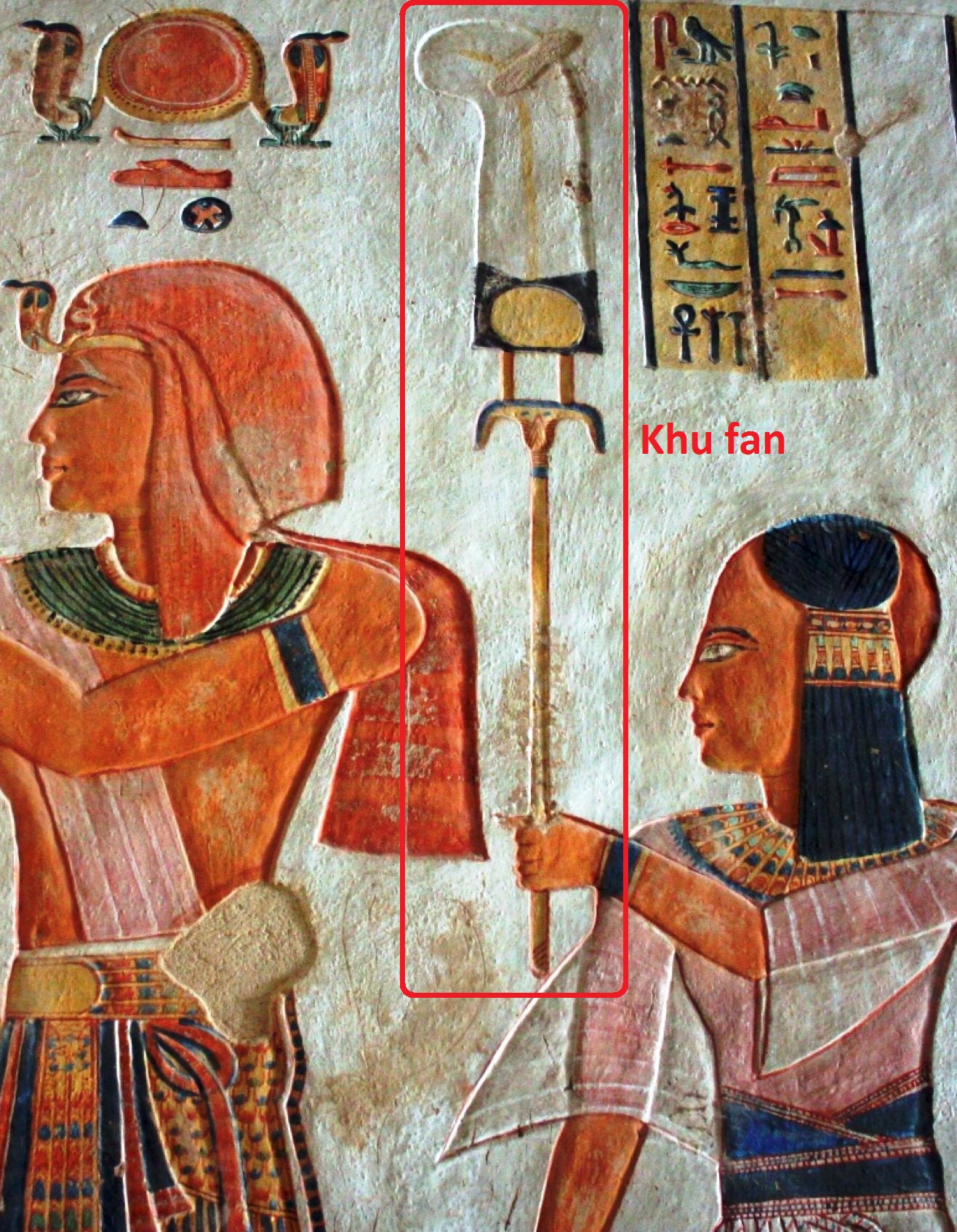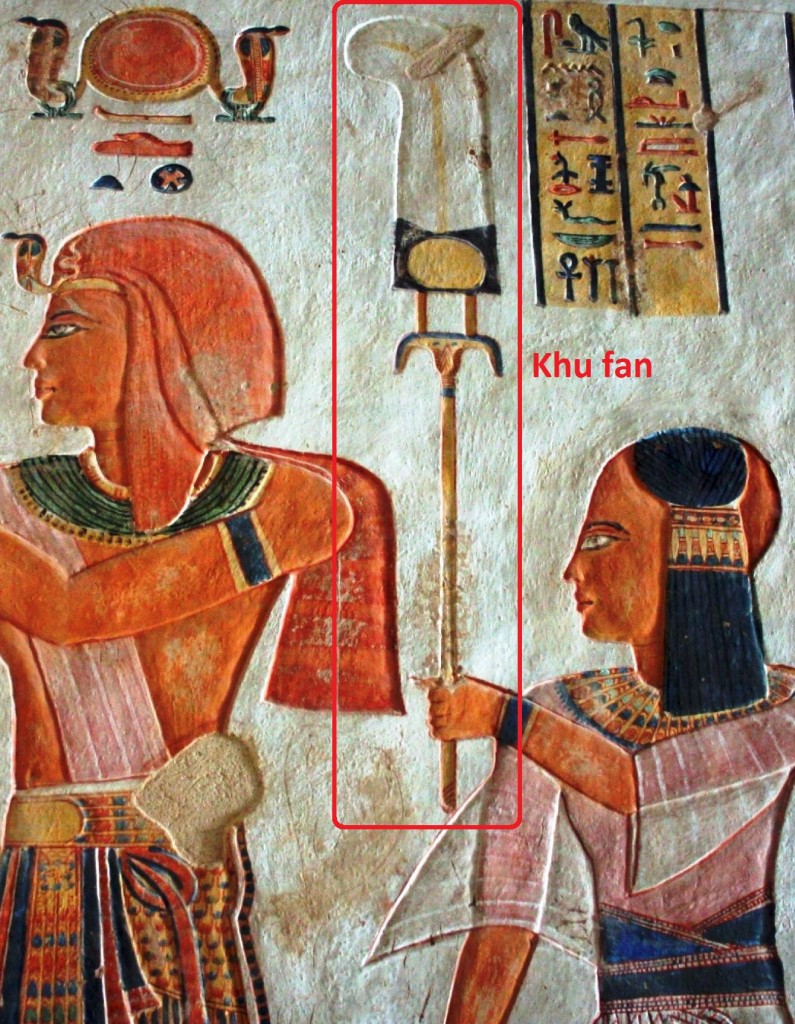Tomb of Khaemwaset (QV 44)
NOTE: The khu-fan does not appear until the middle of the Eighteenth Dynasty, during the reign of Amenhotep II. It is described as a ceremonial fan and was often carried by high-status officials who bore the title ‘fanbearers on the right of the king.’ However, at other times this fan is held above pharaoh in the talons of a divine bird or carried in the king’s wake by a personified ankh or other emblematic personification rather than by a human (such as in the battle scenes of Seti I at Karnak–see OIP 107, plate 3 for an example). In the above image, the khu is carried by the deceased prince Khaemwaset. When the khu-fan appears, it may designate pharaoh as a seshemn-khwi, or ‘protected image,’ and these depictions of the khu being extended to the king seem to identify him as a cult image of Re.
At the memorial temple of Ramses III at Medinet Habu, this may be supported by the appearances of the king within the portals that pierce the south wall of the first courtyard and link the palace with the temple. In most of these scenes, khu-fans and sunshades both appear in the king’s wake and he is shown with a solar disc hovering above his head in all eight. A solar disc is actually part of the headgear in two of the scenes—OIP 51, plates 237B and 238A.
For more on this emblem, see H. Fischer, “Fächer und Wedel” LÄ 2, 81 and L. Bell, Aspects of the cult of the deified Tutankhamun. In: Posener-Kriéger (ed.) Mélanges Gamal Eddin Mokhtar I, 31-59. Bibliothèque d’étude; BdE 97:1. IFAO, Cairo, (1985), 37-54, esp. note 157-8.




subject: fan bearer
Excellent : ‘When the khu-fan appears, it may designate pharaoh as a seshemn-khwi, or ‘protected image’.
I do consider that the term ‘pharaoh’ is only Hebrew and out of place in any Egyptian text.
I try to use ‘sovereign’ or king.
The same with our French teachers using G:Chéops, Mychérinos, etc…
Well, I like Snfrw = S-nfrw = the man of the divinities / l’homme des dieux, eventually closly expressing ancient Egyptians own understanding.
Even F:’roi’ should be avoided as from Celtic origin (Tacite , Vercingétorix = G:strategos / chef de guerre, L:rex/regis).
You probably know of Maiherpri (KV-36) who I place as son of a second wife of Nubian / Ethiopian / Kush descent.
Regards
PS: Where is the ToC of that bludy OIP 107 ?
Thank you again!
You are correct about the word “pharaoh”–I use it interchangeably with “king”, “ruler”, and “sovereign”, but of course none of these were words used by the Egyptians to designate their “pr-aa” I use pharaoh often largely because, in the English lexicon, the word has now become directly associated with the Egyptian king. This site is aimed at the general public and ‘pharaoh’ is familiar and easily recognized.
The ToC of OIP 107 starts on page 13 of the pdf.